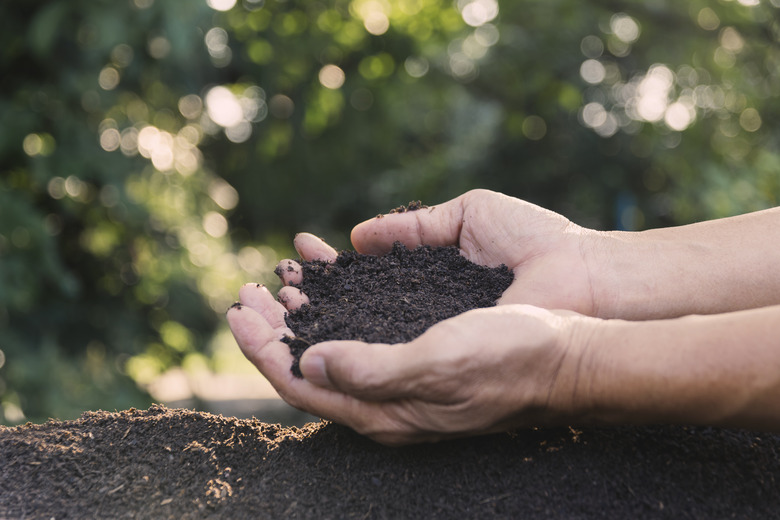5 Components Of Soil
Soil is so much more than sand, silt, or clay. The gases, water, and organic material that make up healthy soil are required to support life — both the plant life sprouting from underground and the microorganisms that help those plants thrive. Taken together, the five main components of soil turn lifeless minerals into a living habitat for insects, plants, fungi, bacteria, and more. The quantity and quality of each of these components play a part in what will flourish in your soil.
Minerals in Soil
Minerals make up the most significant portion of your soil, generally around 45 to 50 percent. Depending on how coarse they are, these minerals are characterized as sand, silt, or clay. The texture of your soil is determined by the proportion you have of each. You can have your soil tested at a local extension office to determine if it is overly sandy or clayey and get advice on how to improve your soil.
Clay can be underappreciated because its tiny particles pack into a sticky soil that is often unworkable, doesn't drain, and rots the roots of plants that are not adapted to it. Clay is also not well suited to construction because it expands and contracts with moisture. However, clay is extremely rich in nutrients because of its fine texture. Silt and sand, meanwhile, don't contain much in the way of nutrients but help with texture and drainage. A mixture of 20 percent clay, 40 percent silt, and 40 percent sand makes up a well-balanced loam that many plants thrive in.
Water and Gases in Soil
The second component of soil, water, is critical to sustaining life. Water is absorbed by plants and microorganisms and also helps organic materials decompose and enrich the soil. Soil can contain almost no water or as much as 50 percent water. While clay soils can get very waterlogged, a sandy soil does a poor job of retaining water — a feature you might find desirable for a rock garden but not for plants that require regular moisture. In either case, adding organic material can help to alleviate moisture problems with your soil. Add compost to break up heavy clay soil and make it easier for water to drain or use compost to help retain water in sandy soil.
Gases make up the third component of soil, providing oxygen and carbon dioxide for roots and microbes to breathe. Flooded and waterlogged soils can displace gases and lead to the death of plants.
Organic Materials in Soil
Organic materials are the compost, rotting leaves and wood, and decomposing animals and microorganisms that form the dark, rich layer on top of the soil. Microorganisms feed on these organic materials, further breaking them down into a crumbly humus, which helps capture nutrients and moisture.
Soil typically contains 1 to 5 percent organic matter. If your soil would benefit from more organic matter, you can till or turn 2 inches of compost into the top 6 inches of soil. In following years, simply apply a 1- to 3-inch layer of compost on top of the soil as a mulch. The compost will gradually break down and work into the soil below.
Microorganisms in Soil
Microorganisms are another critical component of healthy soil. Even though they make up less than 1 percent of its volume, there can be hundreds of millions of microorganisms in a handful of dirt. Decomposers, like earthworms, insects, fungi, and bacteria, break down organic matter into humus. Others symbiotically help roots absorb nutrients or nitrogen. Once microorganisms die, they become organic matter that decomposes, serving another important role in the continuous life cycle of soil.
